GLOBAL PALETTE: The Art of Marvin Soroos
Interview with Artist Marvin Soroos
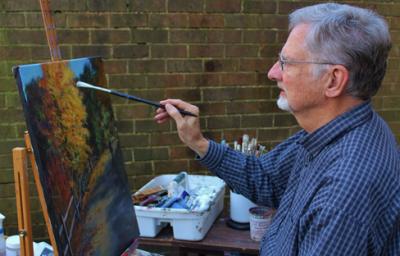
Marvin Soroos, award-winning painter, specializes in acrylic landscapes. Educated at Dartmouth College and Northwestern University, he is a retired professor of international relations and global environmental politics at North Carolina State University. He divides his time between Raleigh, NC, and his childhood home in Missoula. His paintings drawing upon Big Sky country, rural North Carolina, and travels around the world, have been widely shown in galleries. In 2014, they were displayed simultaneously in Bernice’s Bakery (Missoula) and the Rosenzweig Gallery (Durham, NC).
Contact info: [email protected], www.marvinsoroos.com
* * * *
You describe yourself most often as a landscape painter. Why do you believe that portrayal of natural settings so appeals to you?
Having grown up in Missoula and remembering long summer evenings fishing the Blackfoot River with my father, I always enjoy being in nature.While living most of my adult life in the rapidly urbanizing Research Triangle region of North Carolina, I longed to return to the beauty of western Montana, if for only a brief summer vacation visiting my parents. In retirement my wife and I are fortunate to spend much of each year in the old family home I inherited near the University of Montana.
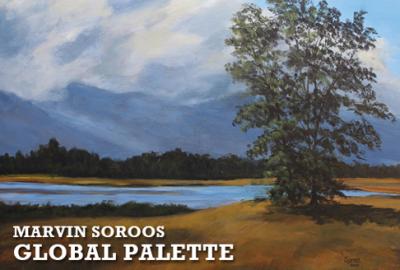
Your landscapes display a certain sublimity and composition which is reminiscent of the Hudson River School landscapes of the 19th century. Do you think that is a movement you identify with in you work?
The landscape paintings of the Hudson River School are typically too formal and romanticized for my taste, and the colors tend toward being rather dark and subdued. I prefer the works of the early 20th century American impressionists, especially those identified with Bucks County in Pennsylvania. They popularized a less formal style learned in France, using bold colors to portray the picturesque farms and small villages of the region.
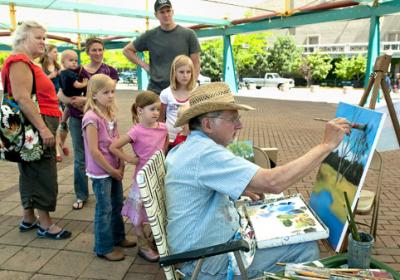
What is it about acrylic which makes it your preferred medium for your art?
Only in recent decades have acrylics been widely adopted by painters as an alternative to oils, which have been used by painters for centuries. I work with heavy body acrylics to achieve durable results that are virtually indistinguishable from oil paintings. Acrylic paints dry quickly (within minutes in Montana’s dry air) after being applied to canvas, which allows for over-painting or glazing without the lengthy wait required by slow-drying oil paints. This quality facilitates experimentation with composition and color while working on a painting.
Acrylics have several practical advantages. Because they are water soluble, brushes can be easily cleaned with soap and water, while keeping our home studios free of toxins and odors associated from the solvents used in painting with oils. Moreover, Liquitex, Golden, and other manufactures of artists’ paints have developed a wide range of complementary products, including gessos, gels, thickeners, glazes, and varnishes.
It’s obvious from your art that you love Montana landscapes; but you also have done a great deal of work in North Carolina where you taught for many years, as well as occasional pieces from your worldwide travels. What commonality do you see in your choice of subject matter among these seemingly much different locales?
I paint the places I have experienced and photographed. In Montana, I am attracted to the wide open vistas and the natural beauty of forests, streams, wildflowers, and mountains. In the Piedmont region of central North Carolina, where the landscapes are more confined by lush vegetation and the rolling terrain, I drive the back roads looking for old weathered houses and tobacco barns. They are getting harder to find as farm land is gobbled up by suburban housing developments. I also enjoy painting the brilliant autumn colors of the hardwood trees of the region, more so than the summer greens.
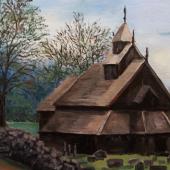
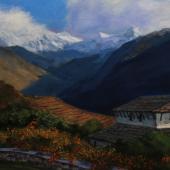
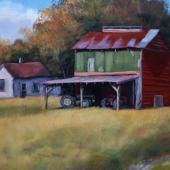
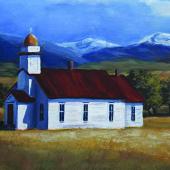
The subjects of my international paintings are eclectic, depending on what is distinctive about the more than 40 foreign countries I have visited in conjunction with my academic career or as a tourist. Among my landscapes are scenes of an onion-domed Russian monastery, the canals of Venice, the traditional nomadic life in Mongolia, a centuries-old wooden Stave church in Norway, and views of the high Himalayas from a trek in Nepal.
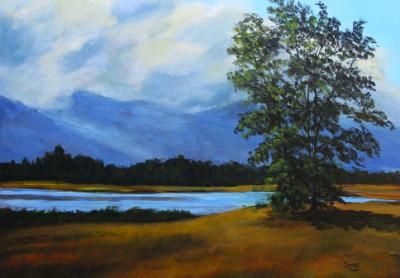
Which artists do you most admire and why?
The landscapes of South Dakota’s late Harvey Dunn resonate with me for his vivid portrayals of the challenges faced by early homesteaders on the arid high plains more than 100 years ago. His best known painting, The Prairie is My Garden, features a woman and her daughter picking wildflowers near their small wooden house on a homestead similar to the one where my mother grew up in western North Dakota.
Clyde Aspevig is the contemporary Montana painter whose work most inspires me. I especially like the way his landscapes capture the essence and color of the broad expanses and skies of central and eastern Montana. His scenes of the mountains of western Montana are also stunning.
What art will you be working on in 2015?
I will be adding to my collection of Montana landscapes and further developing a series of smaller paintings of regional wildflowers that I began last year. My agenda this year also includes assembling a solo exhibition of autumn scenes in North Carolina scheduled for November in Raleigh. From a stylistic perspective, I will do some experimenting with my palette colors.
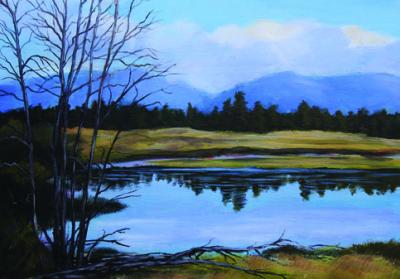
As a retired professor, your new career as a landscape artist no doubt provides enjoyment, but must also fill some gap in your life. Would you agree with that?
I retired from a satisfying academic career early enough to enjoy what I hope will be many good years to pursue other interests, including landscape painting. While mostly self-taught as a landscape painter, I have learned much from the instruction and mentoring of Luana Luconi Winner, an internationally recognized artist living in Raleigh. Painting is only part of what I do in retirement. I enjoy spending hours most days reading widely whatever looks interesting in current fiction and nonfiction, without having to focus on keeping up my academic field.
Describe for our readers what a “perfect day” would look like in the life of Marvin Soroos.
I especially look forward to the days of early summer in western Montana when forests are fresh, hillsides are green, snow lingers on the higher mountains, wildflowers bloom, and towering cumulus clouds race across the sky. Two days a week during the summer months, we host a black-lab mix named Romy while her owners are at work. The dog insists on a morning hike on one of the trails around the Missoula valley during which I shoot photos that often become references for some of my Montana paintings. In the afternoons, my canine friend is content to laze around in our backyard while I set up my easel and paint. Neighbors occasionally drop by to chat and offer their reactions to the work in progress, and one retired friend brings over his paintings for my suggestions.
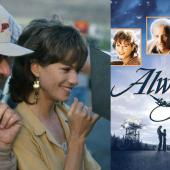
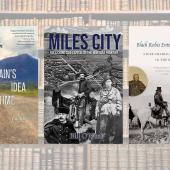
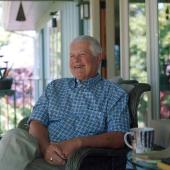
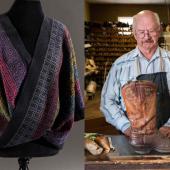
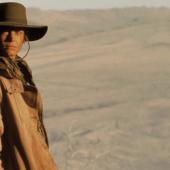
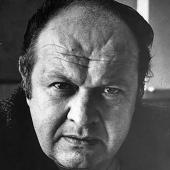

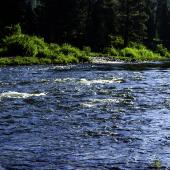

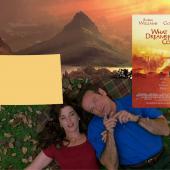

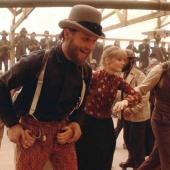
Leave a Comment Here